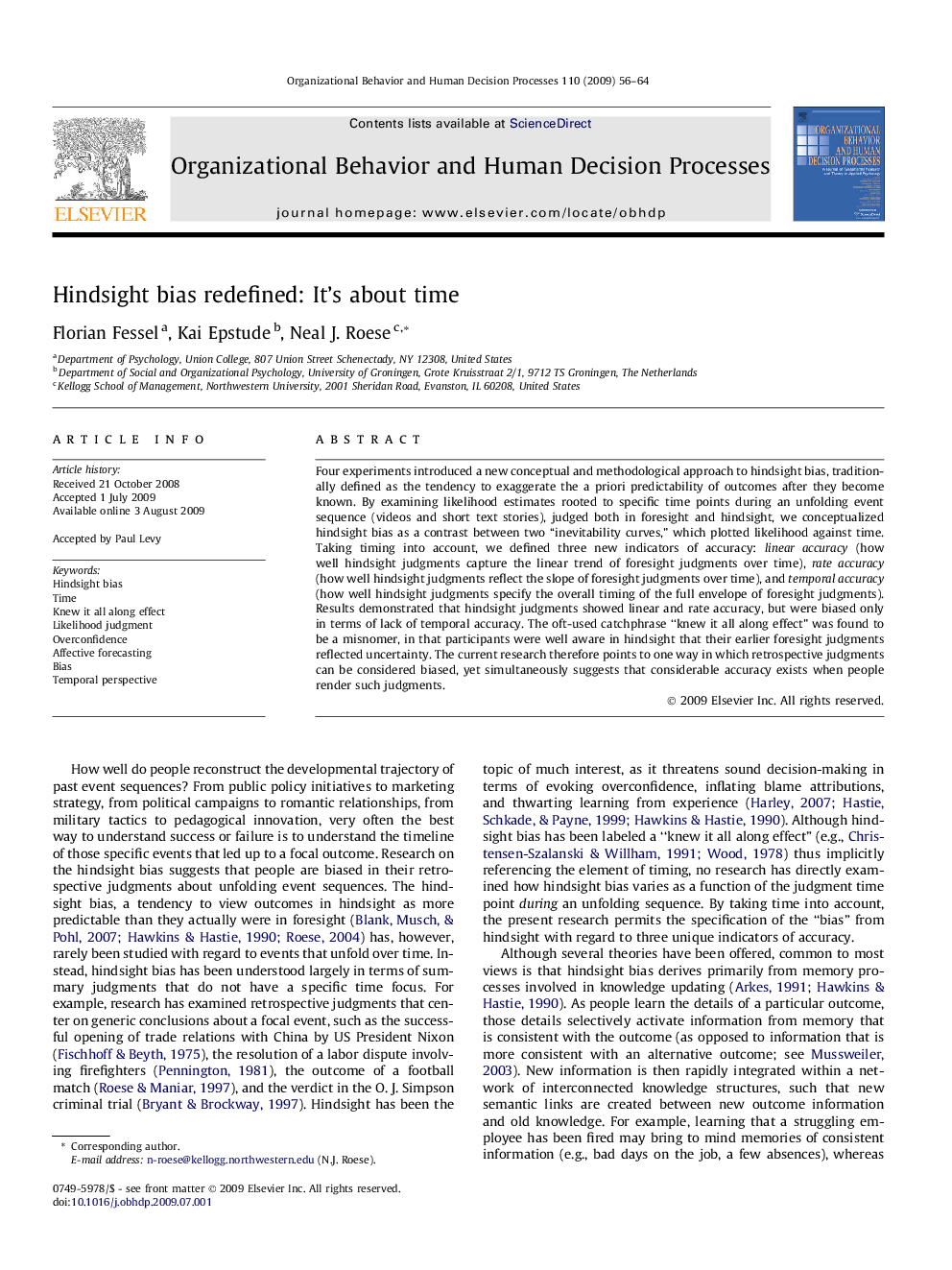| Article ID | Journal | Published Year | Pages | File Type |
|---|---|---|---|---|
| 888897 | Organizational Behavior and Human Decision Processes | 2009 | 9 Pages |
Four experiments introduced a new conceptual and methodological approach to hindsight bias, traditionally defined as the tendency to exaggerate the a priori predictability of outcomes after they become known. By examining likelihood estimates rooted to specific time points during an unfolding event sequence (videos and short text stories), judged both in foresight and hindsight, we conceptualized hindsight bias as a contrast between two “inevitability curves,” which plotted likelihood against time. Taking timing into account, we defined three new indicators of accuracy: linear accuracy (how well hindsight judgments capture the linear trend of foresight judgments over time), rate accuracy (how well hindsight judgments reflect the slope of foresight judgments over time), and temporal accuracy (how well hindsight judgments specify the overall timing of the full envelope of foresight judgments). Results demonstrated that hindsight judgments showed linear and rate accuracy, but were biased only in terms of lack of temporal accuracy. The oft-used catchphrase “knew it all along effect” was found to be a misnomer, in that participants were well aware in hindsight that their earlier foresight judgments reflected uncertainty. The current research therefore points to one way in which retrospective judgments can be considered biased, yet simultaneously suggests that considerable accuracy exists when people render such judgments.
